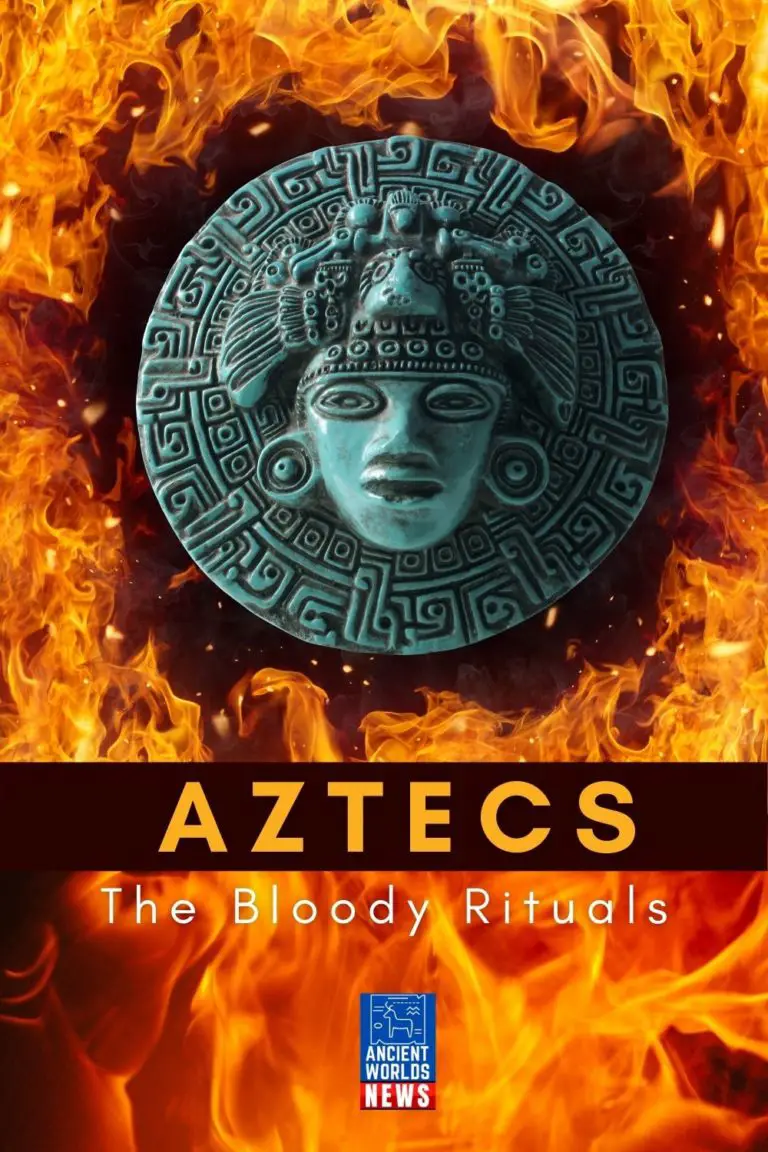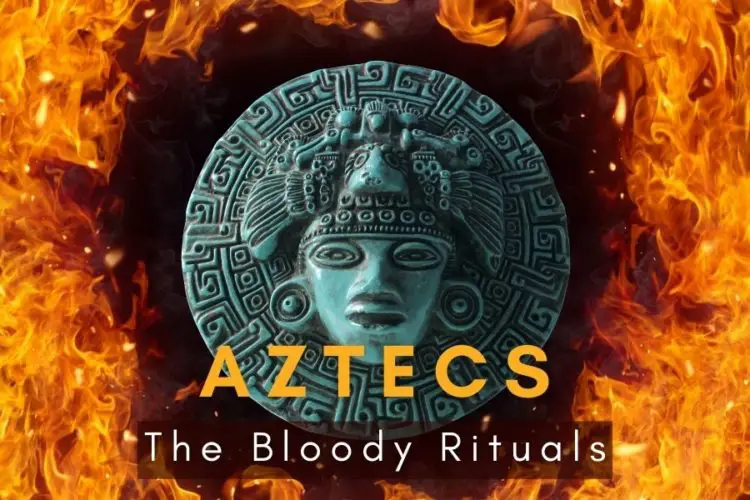The Aztecs came to central America in 1300. Their origin is unknown, but it is believed that initially, they were hunter-gatherers. The name was drawn from the Aztec language, Nahuatl. Their homeland is termed as the ‘white land’. They first appeared in the south-central region of Mesoamerica. The arrival of the Aztecs caused the fall of the previous civilization, the Toltecs. Aztec people were not a large group; they had different ethnic groups, but the region was dominated by the ones who spoke Nahuatl.
Table of Contents:

Archeologists found evidence of the Aztec civilization, but they also got information from other sources. Texts written by indigenous people provided valuable information about their political culture and ruling lineages. There are also ancient books mainly consisting of pictures. It is assumed that the texts were written by literate Aztecs or Friars (a member of mendicants founded in the 12th or 13th century). Codex Mendoza is the most important book that has information on the Aztec empire. The date of its origin goes back to the 16th century. This book was named after the first viceroy of Mexico.
Aztec (Mexica) people themselves describe their arrival in Mexico. In Nahuatl, Aztec means ‘people from Aztlan’. Aztlan is a mythical place from where a large number of groups left and came to Mexico. While they were en route, their deity told them that they would no longer be called Aztecs – they would be known as ‘Mexica’ now.
This is why the term ‘Aztec’ is applied to everyone who left Aztlan and brought its heritage with them. In their tales, they tell of how Mexica people traveled with other tribes but later were split after their tribal deity, Huitzilopochtli, asked them to separate. After this separation, they took the name ‘Mexica’. When they reached Mexico, there were already Aztec city-states. They were finally allowed by the Colhuacan ruler, Cocoxtli, to stay in the barrenness of Tizapan. The Mexica merged entirely with Colhuacan culture and ideas. After living with Colhuacan heritage, they were expelled and forced to move.
When the Mexica were on the move, they saw an eagle eating a snake on a cactus. This vision was predicted as the sign of where they should settle. Aztecs improved the field enough to start agriculture. They supported themselves with crops like potatoes, tomatoes, avocado, beans, and squash. They also hunted animals to eat. They ate snakes, rabbits, armadillos, wild turkeys, and coyotes. The Mexica royal dynasty was founded when the son of a Mexica father and a Colhua mother became the first Huey Tlatoani in 1376.
Gender Division in the Aztec Empire
The counting of relatives in Aztec families was equal from both the mother’s and father’s sides. Inheritance was given to both sons and daughters equally, meaning women were economically independent regardless of their marital status. Men and women both had separate roles. Men were supposed to work outside, and women were supposed to take care of the house. Women were allowed to work. The role of women was considered as important as men to maintain balance in the world and please god. Gender roles were different but equal.
Aztec society was gender-based, but there were more than only two genders. The third gender consisted of all other genders and had their own gender role. Their role was considered very important. The gender roles were mainly connected to religious customs. The third gender was termed patlache and cuiloni.
Patlache is a woman with a penis. She has a man’s body and body hair along with a beard. But she does not want to get married. She befriends women and likes to spend time with them.
Cuiloni is the gender role where a man has sex with another man, but he is on the receiving side of the penetration. This cannot be called homosexuality because it only involves a sexual role. These men are submissive both in sexual behavior and in real life. In religious activities, they are eaten or sacrificed.
Aztec Mythology
In one mythology, the creation of four successive suns is described. They were periods in which different deities ruled, along with a different group of people. Each period ended in destruction, which then allowed another sun to rise with another deity and its beings. According to mythology, the current sun (fifth) was created when a deity sacrificed itself in the bonfire. The sun cannot start moving till other deities do not sacrifice themselves.
In another myth about how the earth was created, two deities, Tezcatlipoca and Quetzalcoatl, defeat a crocodile named Cipactli. The crocodile becomes the earth, and humans will carve into her flesh to survive. The condition was that they offer the crocodile blood (sacrifice). The humans were made out of the dough made from the bones of Cipactli. The dough human figures were imbued with blood, giving them life. Basically, uncooked figures were baked in blood.
The Aztec’s Bloody Calendar
The religion was based on calendar and ritual rites. There were two calendars, one with a cycle of 260 days and the other a cycle of 365 days. Each day was named and numbered in both calendars. Each 20-day cycle was named after the ritual that took place in that cycle. The entire population of the Aztecs was involved in monthly rituals. Festivals involved dancing, impersonating deities, and sacrifices. Food, humans, and animals were sacrificed.
Every 52 years, both calendars reached their starting point, which meant the beginning of the new fire. Old pottery was broken in all households and old fire was put out to allow new fire to take its place. The new fire was started on the breast of the sacrificed human. Then, this so-called sacred fire was distributed to other households. This fire was supposed to be a sun god fighting with darkness, and this light fights the darkness in the real world.
The Flower Wars
The Aztec empire was emerging as a powerful nation. It had control over central and southern Mexico. The only remaining state was the eastern state of Tlaxcala. Instead of facing each other on the battlefield, both parties agreed on the flower battle. In this battle, each force would not kill enemy soldiers but capture them. This battle provided a way for young warriors to gain fame by bringing more captives. Their prisoners were killed later in the sacrifices.
Religious Activities
There was nothing pure and good about Aztec religious activities. It mainly involved sacrificing humans and animals. Whenever there was a battle, a soldier tried to capture the enemies instead of killing them so that they could sacrifice them later. Religious activities required constant labor and multiple resources. The empire was in a constant war where they had to fight to take sacrificing victims. Temples and monuments were given more importance.
In written accounts, a temple with skull towers and a wooden bride also showcasing humans is mentioned. Men, women, and children were sacrificed in that temple. It held spiritual significance for the Aztec people. The sacrifices were made throughout the year. They were small and large, according to the ritual calendar. The sacrifices were done to ask deities to reverse natural causes of destruction, like famine and drought.
According to the Aztec people, they were only saving humankind from destruction. In their mythology, the sun god was continuously fighting with the darkness. If darkness won, it would end the earth. To keep the sun moving and fighting, it had to be fed with human hearts and blood. Basically, the lives of humans were given to the sun so they could survive like the deities who sacrificed themselves in a bonfire. The difference is that Aztec sacrifices were forced. The sacrifices also represented the Aztec empire’s strength. The skulls were mainly of enemies, slaves, and outsiders.
Being sacrificed was considered an honor. In reward, a blessed afterlife as a soldier in the sun’s army was guaranteed. This is why many prisoners, slaves, and soldiers went willingly to sacrifice themselves. Some ceremonies required priests to sacrifice themselves, which was done by self-mutilation. Human hearts were ripped from their chests when they were alive. There is also evidence of cannibalism where bodies of sacrificed humans were eaten by noble families or captors.

